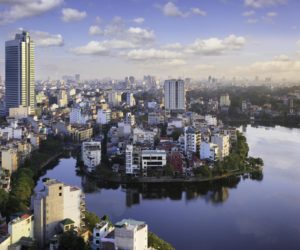After a 10 day trip through India, visiting 2 states and 3 cities, in full monsoon season, I can say the experience was very rich, both personally and professionally… where to start? Maybe by thanking all the people we met there, who demonstrated a great sense of hospitality towards us. We met people from small companies, big companies, self-employed, employees, expatriates, teachers… we were always well received, we talked openly about their country, fascinating and so full of contradictions, these conversations provided the keys to better understand their culture and history. Special thanks to Prashant for the foray into the nightlife of Chennai, and Bhagath for having taken us into this open air museum! Too bad we did not have more time to enjoy it. Well, maybe we will come back! In any case, I will not miss neither the air conditioning nor the curry for some time 😛 and we will not talk about the traffic jams and the pollution of Bangalore. This I am not ready to forget!What first struck me when I arrived in India was the dilapidated state of its cities, whose population is growing faster than infrastructure can adapt. We had only the time to visit 2 large cities (Chennai and Bangalore, Pondicherry having less than one million inhabitants), but this seems to be also the case in New Delhi, Calcutta and Mumbai, according to what we heard. Indeed, as Fred pointed out, it gives a certain idea on the country’s ability to move quickly and improve its overall quality of life. Even in Bangalore, where when we left the airport and drove towards the city center, we remarked “what a nice highway,” and then we quickly saw cows grazing on piles of garbage on sidewalks and makeshift camps next door to the college campuses, and where high tech businesses worked in neighborhoods alongside the poverty of the streets.The central question about the availability of human resources from both a technical and linguistic point of view, proved to be more difficult than what I had anticipated. Even in Pondicherry, the IT students who learn French are very rare… less than 5% at the Pondicherry Engineering College that we visited. The network of the Alliances Francaises and Campus France are very present and active throughout the country, but ultimately, there are only a few hundred Indian IT students who study in France each year and how many of them in the areas that interest us the most? the number must be ridiculous. We encountered a major IT player in the Indian avionics sector in Chennai and they estimated that only 1% of their 1500 embedded engineers in their sector are francophone. They took the gamble of language training with the Alliance Francaise in order to expand their operations in France. It’s a long term investment… And as suggested by an Indian entrepreneur we met in Bangalore, requesting an aeronautical IT engineer to spend time learning a foreign language, to the detriment of his technical progress in his profession, may have him leave the company. There is also the solution to employ translators who would work alongside the engineers but I am well placed to know that translating is not easy neither, especially when dealing with subjects on such a high level of criticality and sophistication, even using translation automation tools. Apparently some big companies do, so it must work at least partially so, however, I remain skeptical!On the technical side, throughout India, there are many of the experts that we were looking for. There are maybe 15 000 in the country. But these people want to work for big name companies, directly for the end customer, and are loyal employees when they work on high-level projects. We heard about the average attrition rate of 20% in India, and when talking about the companies in embedded aeronautics, one comes up with a figure of around 8%. It will definitely not be easy to recruit.But besides all these difficulties which we have clearly understood, there is no doubt that the Indians also know how to demonstrate their seriousness and maturity in the offshore business. From the meetings that we held, it suggested to me that there really is something to do there. Several times we were told, “Everything’s possible in India” 😀 and I sincerely believe this. Nevertheless, the investments that should be deemed essential in building something solid in India would certainly be more costly and the process, more complex than in our previous locations.Well, I have tried to be concise and pragmatic; I could continue to write pages on this subject. The findings of this first trip are not so obvious. For now, a study needs to be conducted on Pentalog’s objectives and the means to implement a possible venture in India. Maybe we’ll soon have the opportunity to make a 2nd trip to India, to deepen our understanding of the possibilities in this country. I think we should at least visit 2 more cities in order to have a better perspective. Coimbatore and Hyderabad were often mentioned as interesting in the exchanges we had… In any case, if we launch and manage the challenge, it would be quite a performance and it would be the icing on the cake for Pentalog’s offshore business.











Florin Z
November 21, 2009 at 12:52 pm ESTHi, To better understand the indian spirit I recommend this book “Life of Pi” by Yann Martel. Maybe after you can understand better indian people. And it’s fun and the action start in Podicherry.
Alexandra MONDANEL
November 24, 2009 at 11:08 am ESTOK, I will. Thanks for suggesting it!
Jagmeet Singh Hanspal
November 24, 2009 at 11:50 am ESTVery nice article and coverage. What I like is all the insights you could gather in such a short trip. Wish to keep reading more of your blogs. Regards, ~ Jagmeet Singh Hanspal ~
Alexandra MONDANEL
November 24, 2009 at 4:29 pm ESTThanks Jagmeet.